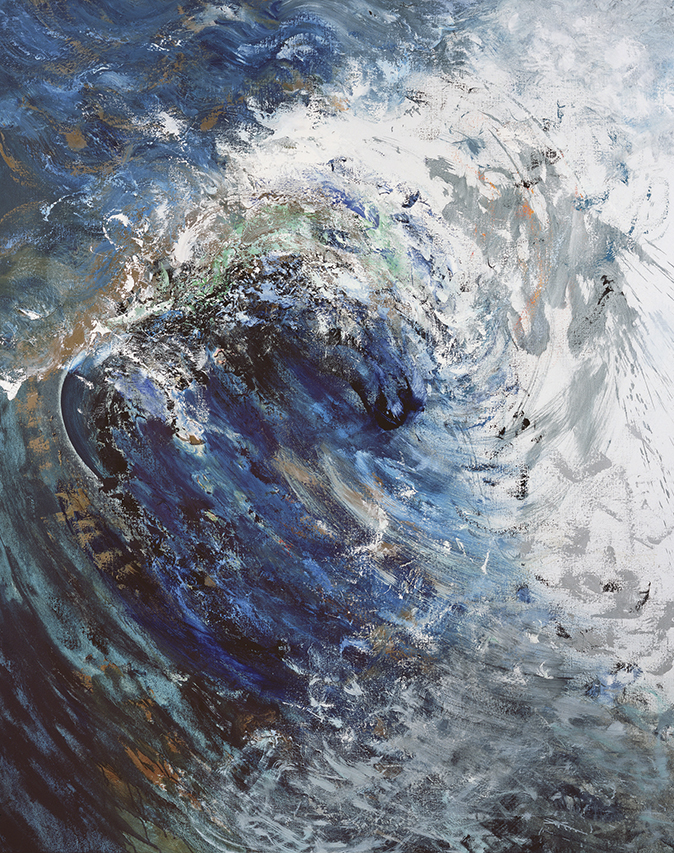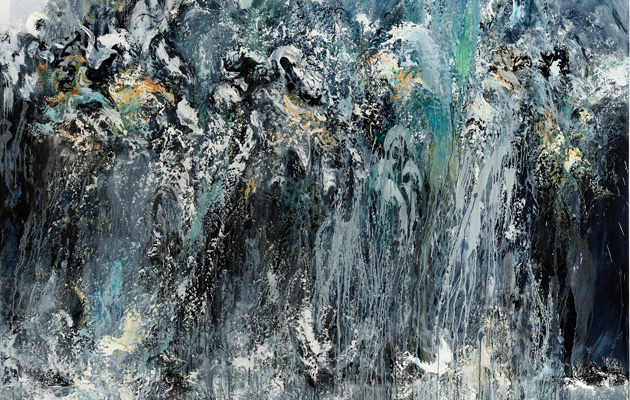My favourite painting: Harriet Bridgeman
'For me, this painting shows her extraordinary skill and confidence in the handling of the sea, its unpredictability and its mystery.'


Wave Breaking, 2006, by Maggi Hambling (b.1945), 48in by 36in, Private Collection
Harriet Bridgeman says: It has been said that Maggi Hambling is to the sea what Constable, her Suffolk compatriot, was to the sky. For me, this painting shows her extraordinary skill and confidence in the handling of the sea, its unpredictability and its mystery. It seems that she is even attempting to paint the sound of the sea, its grandeur and power and the moment before the waves crash onto the beach. As this most talented and original of contemporary artists has said “the sea has death, life, sex, everything you could possibly want in a subject" and here is the living proof!
Viscountess Bridgeman is the founder and Chairman of Bridgeman Images
John McEwen comments on Wave Breaking: Maggi Hambling is Suffolk born and bred; her father was a bank manager and her mother a pillar of the Church and Mothers’ Union. Her first artistic training was at Cedric Morris and Arthur Lett-Haines’s East Anglian School of Painting and Drawing and she remained a close friend of both artists for the rest of their lives. Later, she moved to London and now lives and works in both London and Suffolk.
Her attachment to Suffolk was reinforced when, in 1994, an admirer of her paintings left her a country cottage. it was there that she conceived the idea of Scallop, a steel sculpture for Benjamin Britten, which now stands on the beach at Aldeburgh. During its making, she drove ‘to the sea early in the morning where a huge storm was raging’. The ‘North Sea Paintings’ began and remain a compulsion. ‘My art teacher at school said: “a subject chooses you, you don’t choose a subject.” and somebody told me... Rembrandt said: “I have painted nothing but portraits”.’ Both quotations apply.
‘I try to be a channel so that the truth of those waves or the truth of the person in front of me, if I am doing a portrait, can come through me onto the canvas. So each time I paint a wave, it is a portrait of a wave.’ She draws outdoors and paints in the studio. The sea, such a markedly erosive force in Suffolk, is an all-encompassing metaphor: ‘it’s death, it’s rebirth—it’s got everything going for it.’

Exhibition review: Maggi Hambling: Walls of Water at the National Gallery
Lilias Wigan reviews an exhibition by the National Gallery’s first artist in residence.
Exquisite houses, the beauty of Nature, and how to get the most from your life, straight to your inbox.

Credit: Rembrandt
My Favourite Painting: Maggi Hambling
Maggi Hambling chooses her favourite painting for Country Life.
Country Life is unlike any other magazine: the only glossy weekly on the newsstand and the only magazine that has been guest-edited by His Majesty The King not once, but twice. It is a celebration of modern rural life and all its diverse joys and pleasures — that was first published in Queen Victoria's Diamond Jubilee year. Our eclectic mixture of witty and informative content — from the most up-to-date property news and commentary and a coveted glimpse inside some of the UK's best houses and gardens, to gardening, the arts and interior design, written by experts in their field — still cannot be found in print or online, anywhere else.
